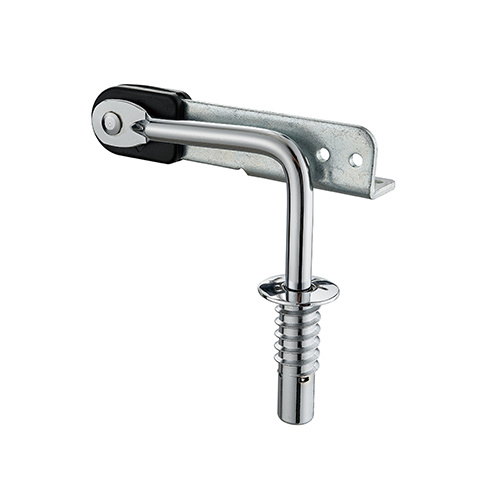Exploring the Environmental Impact of Sofa Headrest Hinges: A Comprehensive Analysis
Apr 11,2025

Exploring the Environmental Impact of Sofa Headrest Hinges
Introduction to Sofa Headrest Hinges
Sofa headrest hinges are critical components that allow for adjustable headrest positions, providing comfort and enhancing the user experience. While they may appear insignificant in the grand scheme of furniture design, these small mechanisms play a vital role not only in functionality but also in the environmental footprint of the furniture industry. In this article, we will deeply explore the environmental implications of sofa headrest hinges, including their material sourcing, manufacturing processes, and lifecycle management.
Understanding the Role of Sofa Headrest Hinges
Sofa headrest hinges are designed to create a seamless, adjustable experience for users. The key functions of these hinges include:
Comfort Enhancement
By allowing the headrest to move, these hinges cater to the individual's comfort preferences, promoting better posture and relaxation.
Mechanics of Durability
The quality of the hinge directly impacts the durability of the sofa. High-quality hinges contribute to the longevity of furniture, reducing waste and the need for replacements.
Design Versatility
Hinges also enable diverse designs in sofas, giving manufacturers the flexibility to craft varied styles while maintaining functionality.
The Materials Behind Sofa Headrest Hinges
Most sofa headrest hinges are made from metals, plastics, or a combination of both. The choice of materials significantly affects their environmental impact.
Metal Hinges: Strength and Sustainability
Metal hinges, typically made from steel or aluminum, are durable and recyclable. However, the extraction and processing of these metals can be energy-intensive. Sustainable practices in sourcing and manufacturing can mitigate these impacts.
Environmental Concerns with Metal Production
1. **Energy Consumption**: The mining and production processes require significant energy inputs.
2. **Water Usage**: Metal processing often involves high water consumption, contributing to resource depletion.
3. **Carbon Footprint**: The transportation and processing of metals generate greenhouse gas emissions.
Plastic Hinges: Lightweight and Cost-Effective
Plastic hinges provide a lightweight alternative, often used in budget-friendly furniture. However, they come with their own set of environmental drawbacks.
Issues Associated with Plastic Production
1. **Non-Biodegradability**: Most plastics are not biodegradable, leading to long-term waste issues.
2. **Oil Dependency**: The production of plastic hinges relies heavily on fossil fuels, contributing to environmental degradation.
3. **Chemical Pollution**: Manufacturing processes can release harmful chemicals into the environment.
Manufacturing Processes and Their Environmental Impact
The manufacturing processes for sofa headrest hinges vary based on the chosen materials and design. Understanding these processes can reveal opportunities for sustainability improvements.
Traditional Manufacturing Techniques
Traditional methods often involve machining, welding, and assembly, each with energy and resource implications.
Energy Consumption in Manufacturing
1. **Machining**: Requires significant energy, especially for metal parts.
2. **Welding**: High heat applications lead to energy waste.
3. **Assembly**: Manual or semi-automated assembly can further add to the overall energy consumption.
Innovative Manufacturing Solutions
Recent advancements in technology are paving the way for more sustainable manufacturing processes, including:
3D Printing
This method reduces waste material and energy consumption by producing parts only as needed.
Eco-Friendly Materials
The use of biodegradable plastics or recycled metals can significantly reduce environmental impacts.
The Lifecycle of Sofa Headrest Hinges
Examining the entire lifecycle of sofa headrest hinges—from production to disposal—provides a clearer picture of their environmental impact.
Production to Consumption
The journey begins with material extraction and manufacturing, followed by distribution to retailers and consumers. Each phase contributes to the overall carbon footprint associated with the hinges.
Post-Consumer Disposal
The end-of-life treatment of sofa headrest hinges is crucial. Many materials can be recycled, yet improper disposal often leads to waste.
Recycling Options
1. **Metal Recycling**: Highly recyclable, metals can be repurposed repeatedly without loss of quality.
2. **Plastic Recycling**: While possible, the rates of plastic recycling are often low due to contamination and lack of facilities.
Eco-Friendly Alternatives and Innovations
As the push for sustainability in the furniture industry grows, so do the innovations in hinge materials and designs.
Biodegradable Hinges
Emerging materials such as bioplastics offer an alternative that breaks down more naturally than traditional plastics.
Recycled Materials Usage
Utilizing recycled metal and plastics in manufacturing sofa headrest hinges not only reduces waste but also lessens the reliance on virgin materials.
Future Trends in Sofa Headrest Hinge Design
The following trends are shaping the future of sofa headrest hinges, with an emphasis on sustainability and user experience.
Smart Hinge Technologies
Integrating technology into hinge design can lead to innovative features, providing better user control and potentially reducing energy usage.
Modular Design Concepts
Furniture designs that allow for easy replacement of components, including hinges, can lead to longer product lifetimes and less waste.
Conclusion
In summary, while sofa headrest hinges may seem like minor components in the vast landscape of furniture design, their environmental impact is significant. From their material choices to manufacturing processes and disposal methods, every step influences the overall sustainability of the furniture industry. As consumers become more environmentally conscious, the demand for eco-friendly alternatives will likely shape how manufacturers approach hinge design and production. The future rests on innovative solutions and a commitment to sustainability to create a more responsible furniture market.
FAQs
1. What materials are commonly used in sofa headrest hinges?
Sofa headrest hinges are typically made from metals like steel and aluminum, as well as plastics. The choice of material affects durability, cost, and environmental impact.
2. How can I recycle old sofa headrest hinges?
Metal hinges can often be recycled at local scrap metal facilities, while plastic hinges may need to be taken to specialized recycling centers that process plastics.
3. Are there eco-friendly alternatives to traditional hinges?
Yes, biodegradable plastics and hinges made from recycled metal are emerging as sustainable options in the market.
4. What are the environmental impacts of metal production?
Metal production is energy-intensive, involves significant water usage, and contributes to carbon emissions due to mining and processing activities.
5. How can manufacturers reduce the environmental impact of sofa headrest hinges?
Manufacturers can adopt more sustainable materials, implement energy-efficient manufacturing processes, and design for recyclability to minimize environmental impacts.
PREV:
Contact Us
E-mail :
Phone/WeChat:
Address:
Factory Building 4 Block D And Block E Shangbei Business Center Jiujiang Town Nanhai District Foshan City









